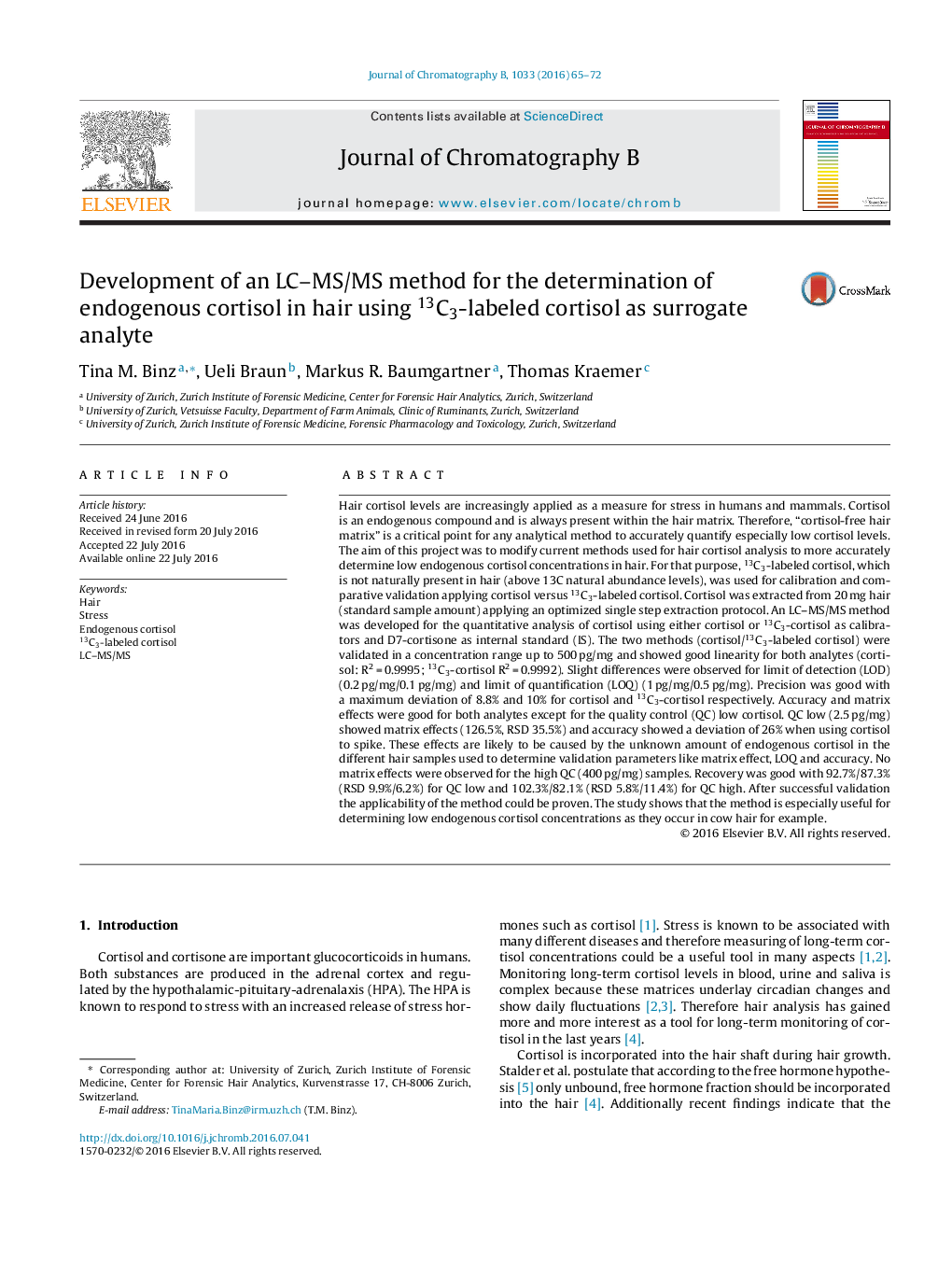| کد مقاله | کد نشریه | سال انتشار | مقاله انگلیسی | نسخه تمام متن |
|---|---|---|---|---|
| 1211846 | 1494024 | 2016 | 8 صفحه PDF | دانلود رایگان |

• Development of a sensitive LC-MS/MS method for the determination of endogenous cortisol in hair and 13C3-cortisol.
• Comparative method validation fulfilled all validation criteria.
• Two applications showed the robustness and reliability of the method.
• The method is especially useful when determining low endogenous cortisol concentrations in hair.
• The method can be used to study conditions that are associated with cortisol alterations in hair.
Hair cortisol levels are increasingly applied as a measure for stress in humans and mammals. Cortisol is an endogenous compound and is always present within the hair matrix. Therefore, “cortisol-free hair matrix” is a critical point for any analytical method to accurately quantify especially low cortisol levels. The aim of this project was to modify current methods used for hair cortisol analysis to more accurately determine low endogenous cortisol concentrations in hair. For that purpose, 13C3-labeled cortisol, which is not naturally present in hair (above 13C natural abundance levels), was used for calibration and comparative validation applying cortisol versus 13C3-labeled cortisol. Cortisol was extracted from 20 mg hair (standard sample amount) applying an optimized single step extraction protocol. An LC–MS/MS method was developed for the quantitative analysis of cortisol using either cortisol or 13C3-cortisol as calibrators and D7-cortisone as internal standard (IS). The two methods (cortisol/13C3-labeled cortisol) were validated in a concentration range up to 500 pg/mg and showed good linearity for both analytes (cortisol: R2 = 0.9995; 13C3-cortisol R2 = 0.9992). Slight differences were observed for limit of detection (LOD) (0.2 pg/mg/0.1 pg/mg) and limit of quantification (LOQ) (1 pg/mg/0.5 pg/mg). Precision was good with a maximum deviation of 8.8% and 10% for cortisol and 13C3-cortisol respectively. Accuracy and matrix effects were good for both analytes except for the quality control (QC) low cortisol. QC low (2.5 pg/mg) showed matrix effects (126.5%, RSD 35.5%) and accuracy showed a deviation of 26% when using cortisol to spike. These effects are likely to be caused by the unknown amount of endogenous cortisol in the different hair samples used to determine validation parameters like matrix effect, LOQ and accuracy. No matrix effects were observed for the high QC (400 pg/mg) samples. Recovery was good with 92.7%/87.3% (RSD 9.9%/6.2%) for QC low and 102.3%/82.1% (RSD 5.8%/11.4%) for QC high. After successful validation the applicability of the method could be proven. The study shows that the method is especially useful for determining low endogenous cortisol concentrations as they occur in cow hair for example.
Journal: Journal of Chromatography B - Volumes 1033–1034, 15 October 2016, Pages 65–72